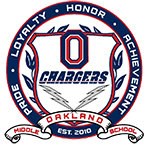Welcome to Mr. Good's Webpage!!
- Welcome! Check your grades regularly through Skyward using your assigned username and password. If you need assistance with your login information, visit or call our attendance office (ext.).
- Use Clever to access assignments.
- Contact me to obtain online textbook information for this class. You can access your Office 365 account by clicking here, the username and password are the same as your computer login at school.


